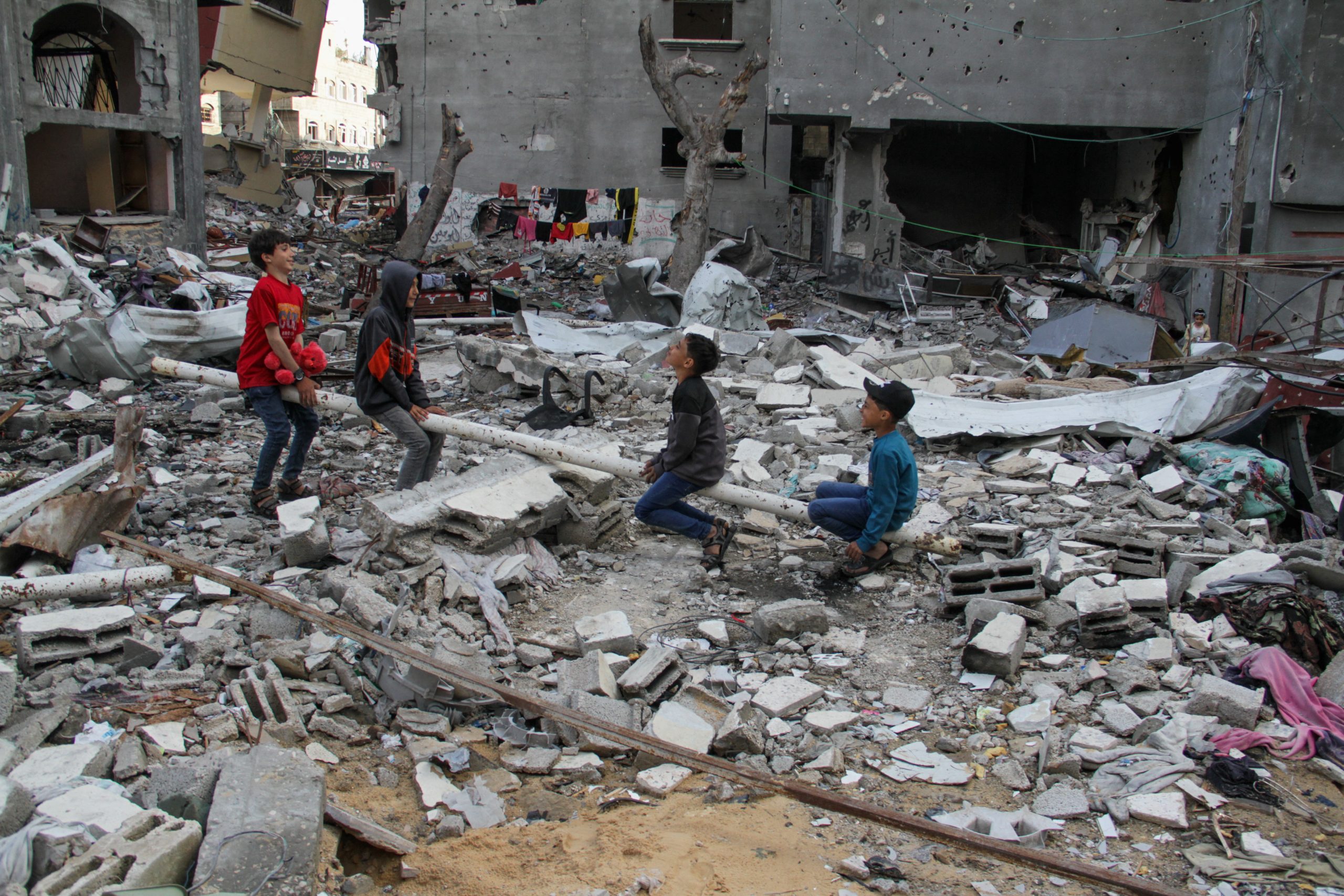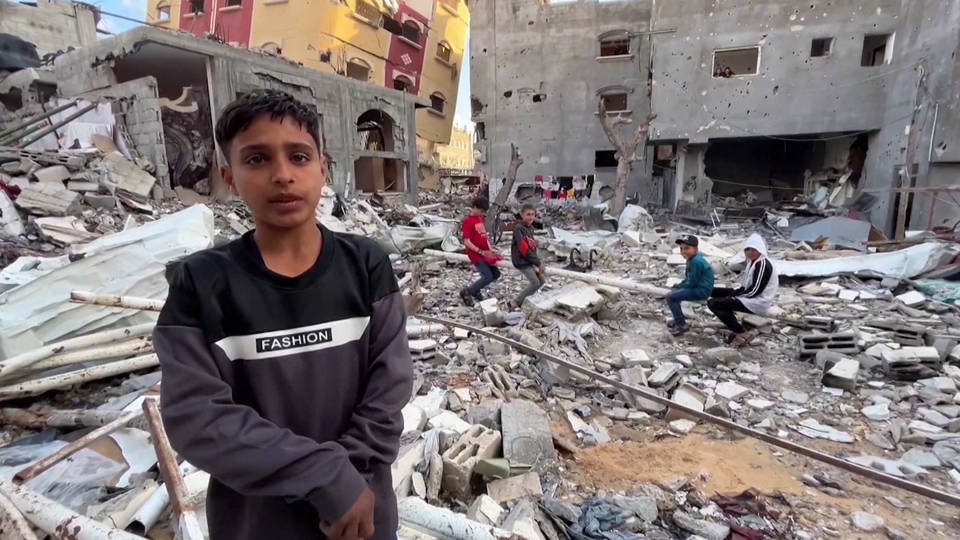In the aftermath of a devastating war in Gaza, children are seen playing amidst the rubble, their games mirroring the harsh reality of their surroundings. A makeshift seesaw crafted from debris becomes a focal point for youngsters, symbolizing the scarcity of toys and the destruction wrought upon their homes and lives by the conflict. With most families displaced and basic necessities scarce, the joyous atmosphere typically associated with Eid al-Fitr, the festival marking the end of Ramadan, is conspicuously absent.
The six-month Israeli air and ground campaign has wrought profound changes on Gaza, leaving widespread destruction, famine looming in some areas, and disease spreading through makeshift tent cities. This Eid, typically a time for familial celebration and the exchange of gifts, is marred by economic hardship and scarcity. The cessation of commercial imports into Gaza as part of Israel’s offensive further exacerbates the plight of its residents, particularly the children who lack access to new toys.
Amidst the ruins of Jabalia refugee camp, children find solace in creative play, fashioning toys from the remnants of their shattered surroundings. Their resilience is evident as they adapt to their circumstances, finding joy in simple pleasures despite the devastation surrounding them. A sense of camaraderie emerges as they gather around the makeshift seesaw, momentarily transcending the grim reality of their existence.

Children Play Among Gaza’s Ruins During Eid (Credits: Reuters)
In one poignant scene, a group of boys stages a mock battle amidst the rubble, reenacting the conflicts that have ravaged their community in recent months. For these children, the trauma of loss and displacement is palpable, their innocence overshadowed by the specter of violence and loss. Amidst the chaos, activists like Abdulrahman Abu Karsh strive to bring moments of joy and entertainment to the children of Gaza, offering a brief respite from the pervasive sadness that permeates their lives.
Despite the challenges they face, the children of Gaza demonstrate remarkable resilience and ingenuity, finding ways to play and connect amidst the ruins of their homeland. Their games serve as a poignant reminder of the toll that war has taken on their innocence and childhoods, yet also symbolize their unwavering spirit in the face of adversity. As they navigate the rubble-strewn streets and makeshift shelters of Gaza, these children embody both the tragedy and the resilience of a community besieged by conflict.
In the absence of material wealth and stability, the children of Gaza find joy in the simple pleasures of play, forging bonds of friendship amidst the chaos of war. Their laughter and camaraderie offer a glimmer of hope amidst the devastation, a testament to the indomitable spirit of the human heart in the face of adversity. Despite the challenges they face, these children remind us of the power of resilience and the importance of preserving the innocence and joy of childhood, even in the darkest of times.























